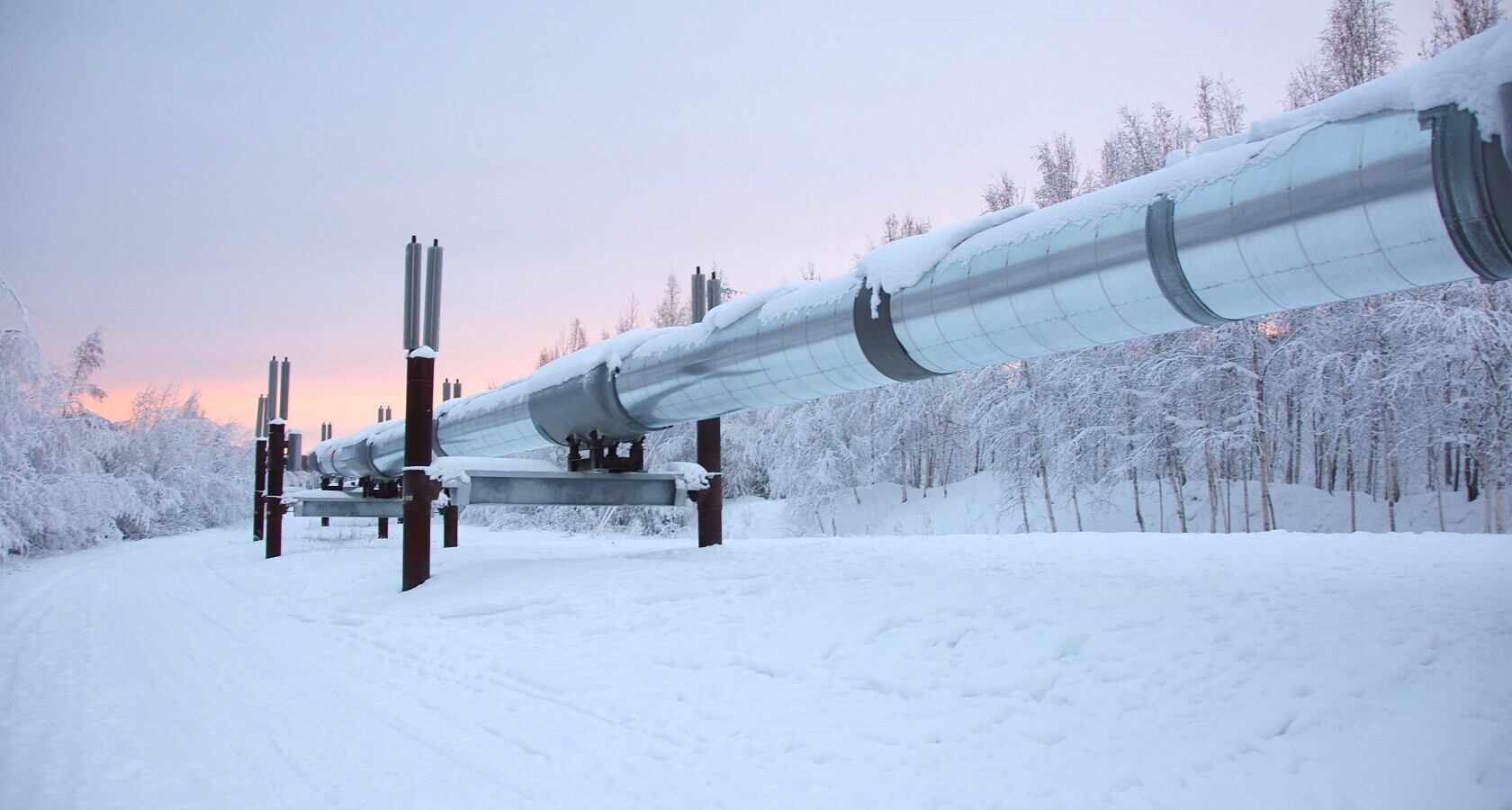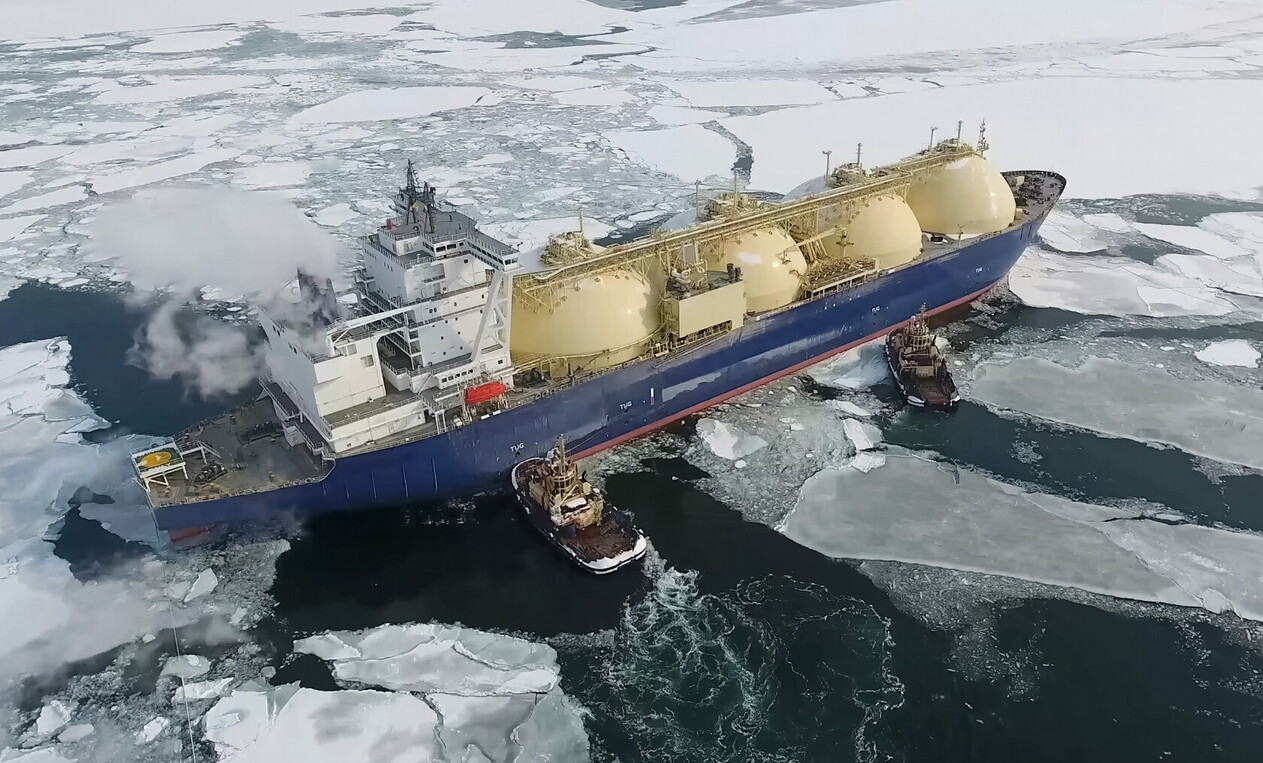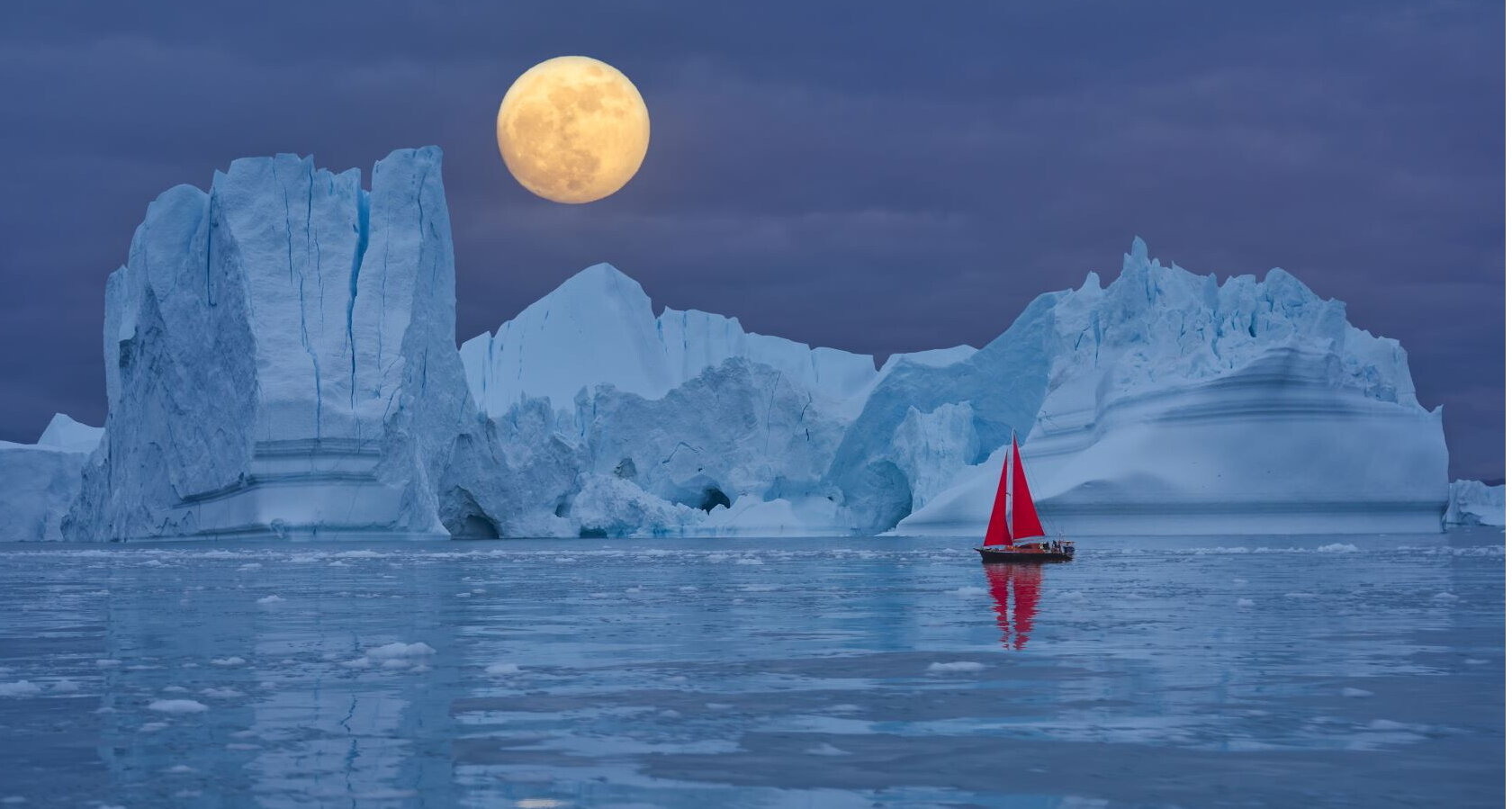
Scenario
The future of hydrocarbons
The Arctic could become a major source of oil and gas, but to turn its potential into action, a number of challenges must be addressed: from climate to cost and environmental impact. There is also increasing focus on critical minerals
14 min
T
he role of the Arctic* in global petroleum supply over the coming decades is a subject of growing interest. The region’s geological potential, the shrinking ice cap, and the possibility of geopolitical turbulence have made it an area to watch. At the same time, concerns persist—particularly about the environmental risks of hydrocarbon exploration and production in such a fragile ecosystem.
Beyond environmental challenges, the lack of infrastructure and the high costs of developing oil fields in remote, harsh conditions create economic hurdles. The viability of new projects will depend on the scale of discoveries and global oil prices, which will be influenced by the expansion of other oil sources, such as U.S. unconventional production, and the growth of carbon-free energy alternatives.
Although exploration activity has increased in several Arctic countries, suggesting the region could become a significant source of oil, many obstacles remain. Sanctions related to the war in Ukraine have added further uncertainty, making the future of Arctic oil development more difficult to predict.
Huge potential
Oil and gas development in the Arctic is not a recent phenomenon. Significant petroleum production has been underway since the 1960s, particularly in Russia’s Komi Republic and Nenets Autonomous Okrug, as well as in Alaska, home to the Prudhoe Bay field—the largest in the United States, with 25 billion barrels of oil in place. Until now, most Arctic activity has been onshore, but exploration efforts are increasingly focused on the potential for large-scale offshore development. Norway has emerged as a major player in this shift, awarding numerous licenses in the Barents Sea and bringing two major fields into production, with a third soon to follow.
In 2008 a comprehensive assessment of potential hydrocarbon reserves for the entire area north of the Arctic Circle was published by the USGS. The report concluded that the region’s vast continental shelves could represent the largest remaining unexploited petroleum reserves on Earth. According to the assessment, the Arctic holds an estimated 22 percent of the world’s undiscovered, technically recoverable oil and gas resources. This includes 13 percent of undiscovered oil, 30 percent of undiscovered natural gas, and 20 percent of undiscovered natural gas liquids. This assessment translates to an estimated 90 billion barrels of undiscovered, technically recoverable oil, 1,670 trillion cubic feet (47 trillion cubic meters) of natural gas, and 44 billion barrels of natural gas liquids. These resources are distributed across 25 geologically defined areas north of the Arctic Circle believed to have hydrocarbon potential (see Figure 1 below). Approximately 84 percent of these resources are expected to be located offshore.
N
atural gas makes up the largest share of the estimated recoverable resource base, accounting for approximately 70 percent. Most of these reserves are concentrated in West Siberia and the eastern Barents Sea. Most of the oil is located in the Arctic part of Alaska towards the North Pole and in East Greenland.
The breakdown shows that Russia holds the largest share of Arctic resources by a significant margin (see Figure 2 below). The West Siberian shelf alone holds 32 percent of the total estimated 412 billion barrels of oil equivalent in Arctic resources. Other Arctic regions in Russia account for another 26 percent, bringing the country’s share to 58 percent. Of the remaining 42 percent, Alaska holds approximately 18 percent, Greenland 12 percent, and all other Arctic-region countries, including Norway, also 12 percent. However, these estimates are subject to considerable uncertainty. The assessment relies on geological assumptions, and in some areas, there is little to no direct data. According to the USGS, the biggest challenge has been the lack of information, leading researchers to base part of the assessment on geological parallels with similar formations elsewhere in the world.
Extensive cooperation between Arctic states will also be essential. At the same time, environmental risks and public opposition could undermine new hydrocarbon projects.
More than three-quarters of these resources are located offshore, within the territories of the five Arctic littoral states: the United States, Canada, Russia, Norway, and Greenland. Among them, the first four are already established petroleum-producing countries. As climate change is reducing both ice thickness and extent, these resources are becoming increasingly reachable, opening up new opportunities for industrial development and transport to world markets – for example, through the Northern Sea Route.
Despite rising global temperatures, Arctic offshore production is likely to remain significantly more expensive than in most other petroleum regions. Harsh climatic conditions—including temperatures as low as -50 degrees Celsius, extensive ice coverage for much of the year, long distances from land, and near-total darkness in winter—pose major logistical and operational challenges. As a result, only multi-billion barrel discoveries and high oil-price expectations would justify the cost of development. Advancing Arctic oil and gas production may require technological breakthroughs in several areas, as well as strong political support, particularly in terms of fiscal policy. Extensive cooperation between Arctic states will also be essential. At the same time, environmental risks and public opposition could undermine new hydrocarbon projects. Search-and-rescue operations and oil spill response in such extreme conditions present serious challenges, raising concerns about the feasibility of large-scale Arctic drilling. While many Arctic basins are likely to hold substantial natural gas reserves, developing these resources would require overcoming significant infrastructure limitations, further increasing exploration risks.
Prospects for the development of littoral states
When assessing the five Arctic littoral states and their approach to hydrocarbon development, they can be divided into two distinct groups. Canada, Greenland, and the United States have either partially or entirely banned Arctic hydrocarbon exploration for environmental reasons, with little indication that this stance will change unless there is a significant political shift.In Canada, Arctic waters were designated as indefinitely off-limits to future oil and gas licensing in 2016. Although this policy is subject to review every five years, the ban was recently extended into the late 2020s and broadened to prohibit any oil and gas activity in Canadian waters.
M
eanwhile, the government in Greenland banned all oil and gas exploration in the country in 2021, although previous exploration had not provided much hope that commercial discoveries would be made. The USA may prove the exception, as although President Obama permanently banned offshore oil and gas drilling in the ”vast majority” of US-owned northern waters, a decision that was re-confirmed by the Biden administration in 2025, the second Trump administration may provide some hope to oil and gas companies. One of the first policy announcements of the second Trump term was the White House’s plan for “Unleashing Alaska’s Extraordinary Resource Potential.” The initiative aimed to expedite permitting and leasing while promoting the development of the region’s vast natural gas reserves. As a result, increased exploration and production activity in Alaska is expected in the coming years.
Norway and Russia have taken a more consistent approach in supporting and encouraging Arctic hydrocarbon exploration and development. Norway, in particular, views the Barents Sea as a key area for future growth as its other offshore regions mature. Recent licensing rounds indicate strong industry interest in the region.
The Barents Sea already hosts two producing fields: Snohvit, which includes an associated LNG plant, and the Goliat oil field. A third, Johan Castberg, is expected to begin production in early 2025, tapping into its estimated 500 million barrels of oil reserves. Meanwhile, preparations are underway for the development of the Wisting field, also estimated at 500 million barrels, and several additional discoveries have been made. Since the start of the war in Ukraine, Norway's role in ensuring Europe’s gas supply security has driven further investment in the Arctic. In the past three licensing rounds (APA 2022, 2023, and 2024), the Norwegian government has offered more than 100 new license areas in the Barents Sea. Of these, eleven have been awarded to companies for exploration, laying the groundwork for future production in the region. A potential link between Norwegian and Russian Arctic development seemed possible in 2011 when the two countries settled their Barents Sea border dispute and explored oil exploration partnerships. However, the annexation of Crimea and the war in Ukraine effectively ended any prospects for collaboration, leaving Russia to pursue its Arctic ambitions alone.
President Putin views the region as a geopolitical asset and has pushed for hydrocarbon development to expand infrastructure and establish the Northern Sea Route as a viable transport corridor. Russia already has numerous onshore gas fields in production, including Yurkharovskoye, which supplies the Yamal LNG plant. Offshore, Russia operates two oil fields, Prirazlomnoye and Novoportovskoye, both of which export crude to global markets. Additional discoveries have been made and await development, while new port infrastructure is under construction at multiple sites to expand exports to Europe and Asia. The withdrawal of international investment and the imposition of sanctions since 2014 have significantly slowed Russia's Arctic energy ambitions, with delays at the Arctic LNG-2 project being the latest example. Despite these setbacks, the Kremlin remains committed to further developing its vast oil and gas reserves in the Arctic, viewing them as a key pillar of both energy strategy and foreign policy.

Critical minerals in the Arctic
Beyond oil and gas, Russia is looking to develop its mineral resources as a source of revenue and geopolitical leverage in the global energy transition. However, it is not alone in this ambition. Canada and the United States have also expressed interest in expanding their critical mineral production, while the U.S. has reaffirmed its strategic interest in Greenland for the same reason. At present the Arctic region produces 44 percent of the world’s palladium, 13 percent of its platinum and 11 percent of its nickel, with Russia and Canada being the key suppliers. The Arctic holds significant reserves of rare earths, vanadium, silver, copper, and other minerals that will be essential for the expansion of green technology. As countries work to secure supply chains and reduce reliance on foreign sources, the region has drawn growing geopolitical interest. Governments and industries are increasingly focused on gaining a competitive advantage or at least minimizing supply risks for these critical materials. It remains unclear how quickly exploration will advance or how commercially viable these efforts will be. However, the presence of these strategic resources has undoubtedly heightened interest in the Arctic’s mineral potential.
An uncertain future
The Arctic holds vast hydrocarbon resources, but their exploitation remains challenging due to harsh climatic conditions, remoteness, and environmental risks. Two countries have outright bans on exploration, while one—the United States—is reconsidering its stance. Meanwhile, Norway and Russia continue to actively explore and produce oil and gas. Concerns over energy security are driving further investment in the region, yet the long-term viability of these high-cost projects is uncertain. Their success depends on oil price trends, project economics, and the pace of the energy transition, which could significantly reduce oil and gas demand beyond 2030. As a result, attention may shift toward the Arctic’s critical mineral resources, which are essential for green technologies. This could increase the region’s geopolitical importance, as countries compete to secure supply chains for materials vital to the global energy transition.

